
How to Use ESP-WROOM-32: Examples, Pinouts, and Specs
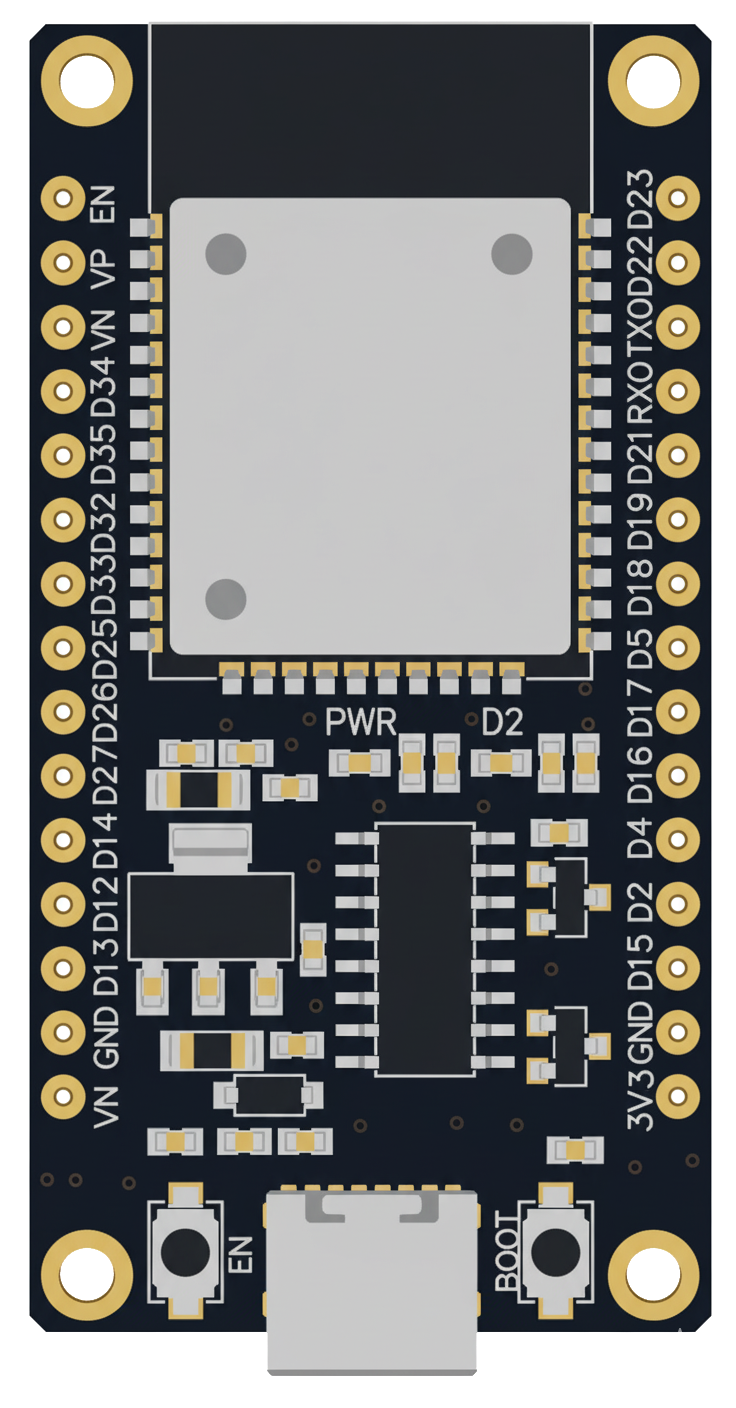
 Design with ESP-WROOM-32 in Cirkit Designer
Design with ESP-WROOM-32 in Cirkit DesignerIntroduction
The ESP-WROOM-32 is a powerful Wi-Fi and Bluetooth module developed by Espressif Systems. It is based on the ESP32 chip, which features dual-core processing, low power consumption, and a wide range of GPIO options. This module is designed for Internet of Things (IoT) applications, offering robust wireless connectivity and versatile functionality in a compact form factor.
Explore Projects Built with ESP-WROOM-32
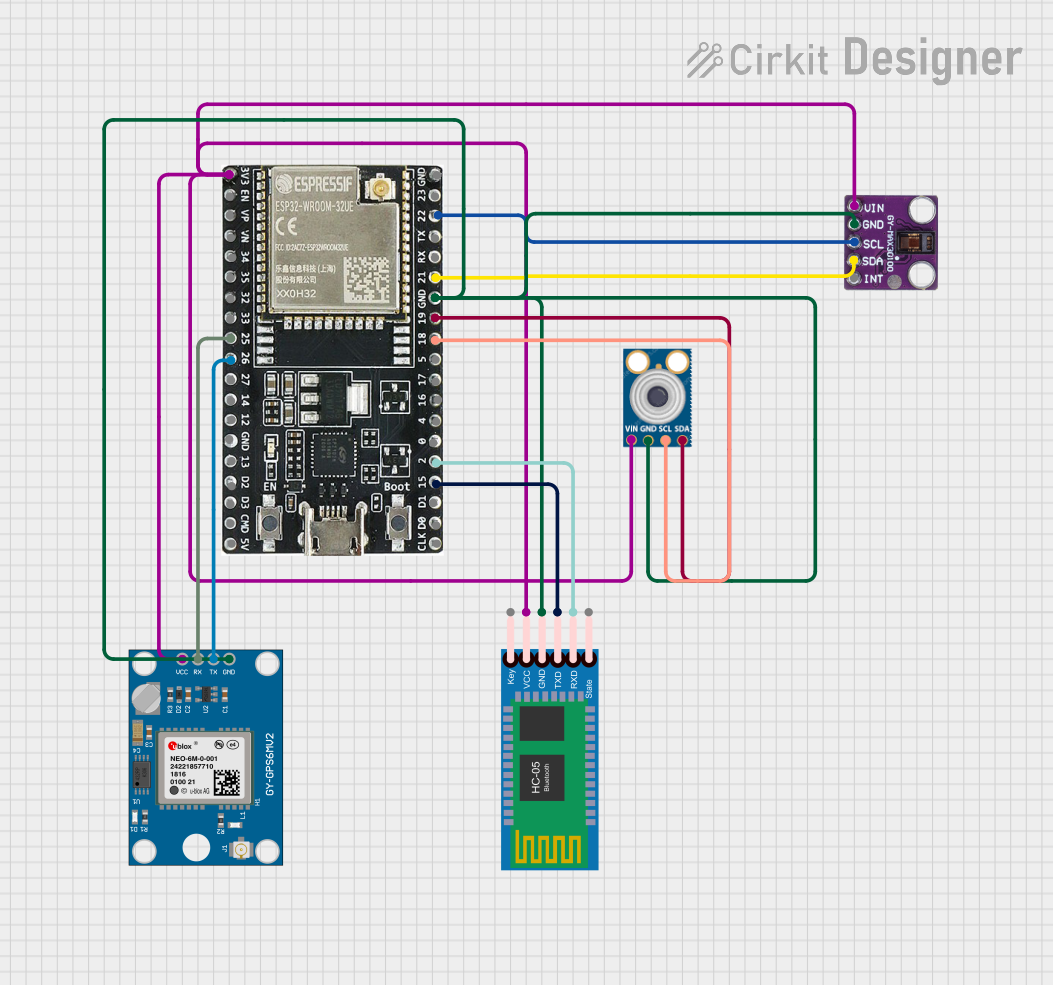
 Open Project in Cirkit Designer
Open Project in Cirkit Designer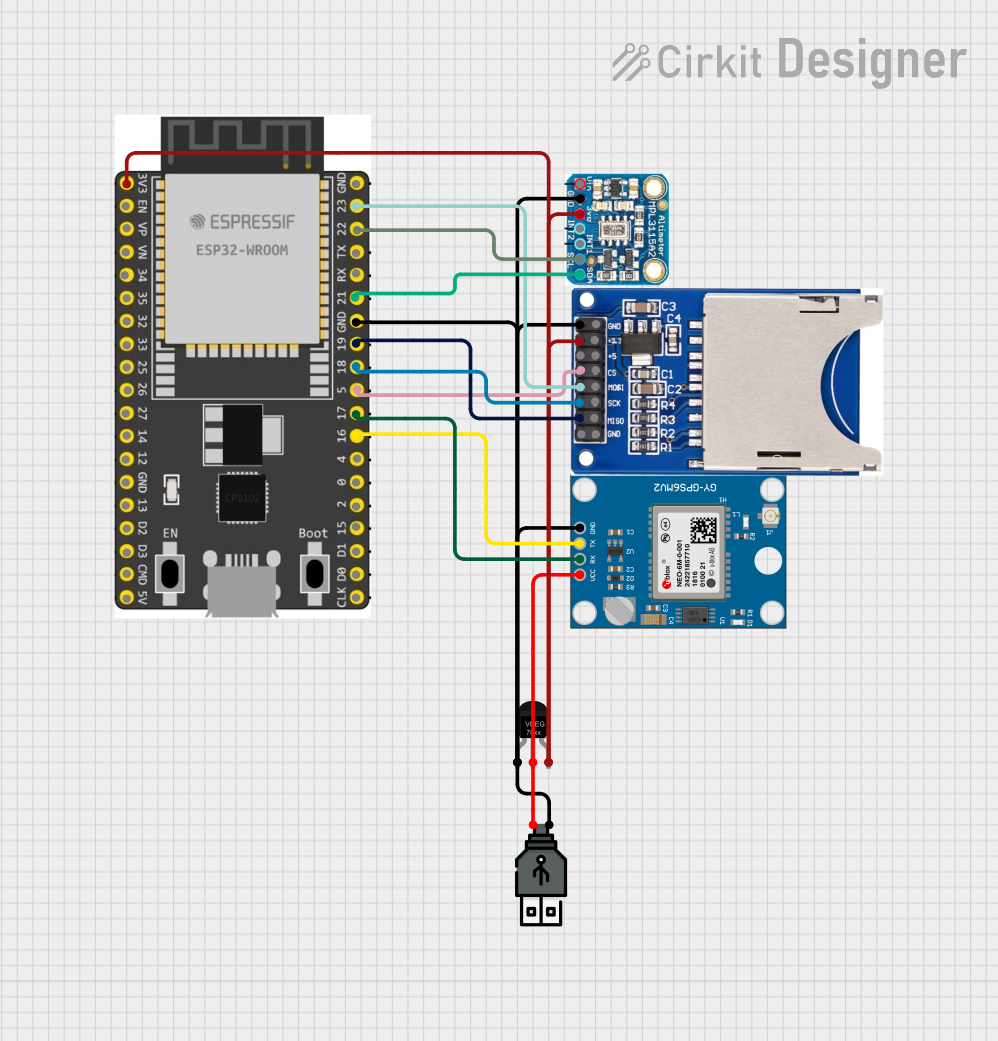
 Open Project in Cirkit Designer
Open Project in Cirkit Designer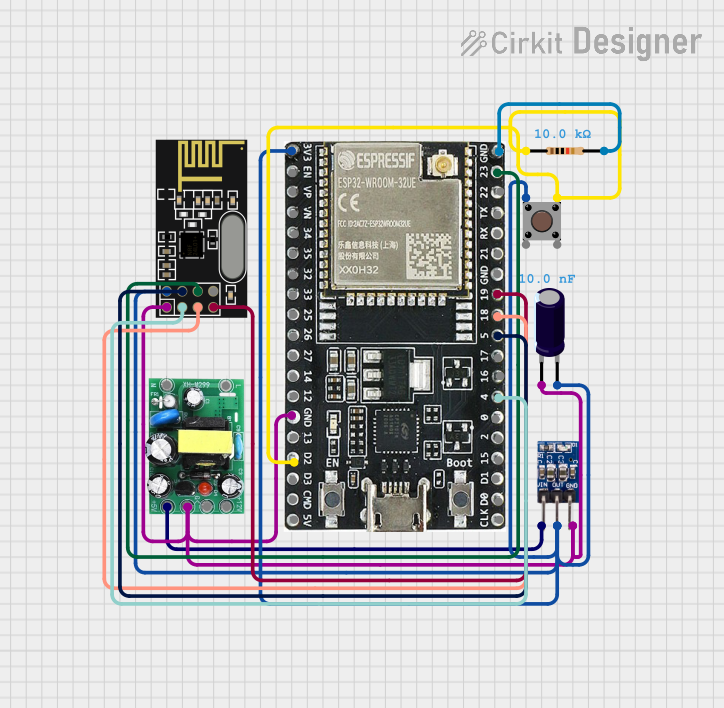
 Open Project in Cirkit Designer
Open Project in Cirkit Designer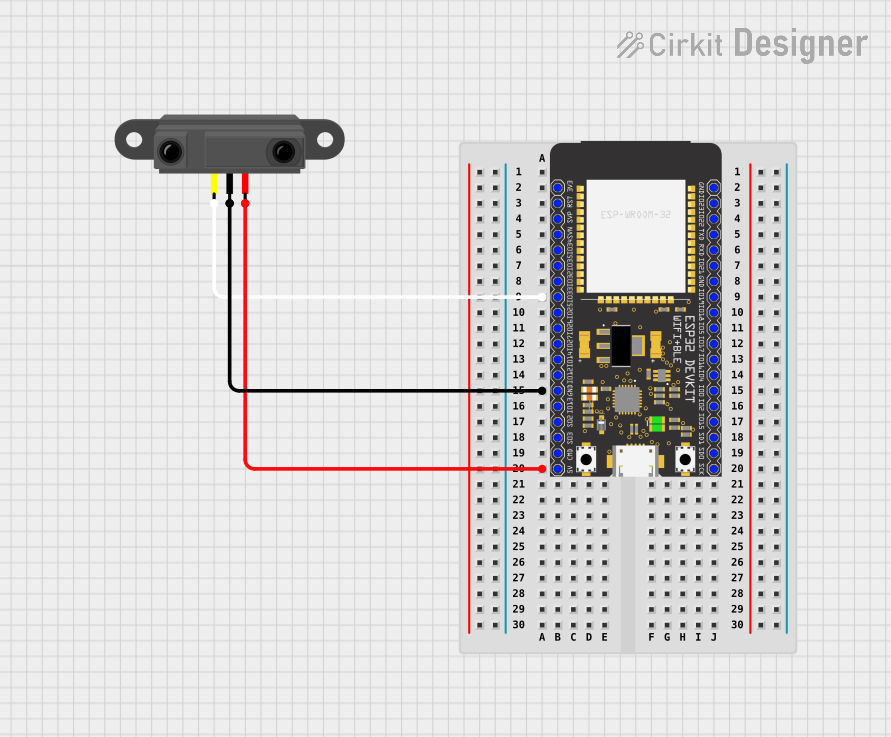
 Open Project in Cirkit Designer
Open Project in Cirkit DesignerExplore Projects Built with ESP-WROOM-32

 Open Project in Cirkit Designer
Open Project in Cirkit Designer
 Open Project in Cirkit Designer
Open Project in Cirkit Designer
 Open Project in Cirkit Designer
Open Project in Cirkit Designer
 Open Project in Cirkit Designer
Open Project in Cirkit DesignerCommon Applications and Use Cases
- Smart home devices (e.g., smart lights, thermostats)
- Wearable electronics
- Industrial IoT systems
- Wireless sensor networks
- Robotics and automation
- Prototyping and development of connected devices
Technical Specifications
The ESP-WROOM-32 module is packed with features that make it suitable for a variety of applications. Below are its key technical specifications:
General Specifications
| Parameter | Value |
|---|---|
| Microcontroller | ESP32 (dual-core Xtensa LX6) |
| Clock Speed | Up to 240 MHz |
| Flash Memory | 4 MB (default) |
| SRAM | 520 KB |
| Wireless Connectivity | Wi-Fi 802.11 b/g/n, Bluetooth v4.2 BR/EDR |
| Operating Voltage | 3.0V to 3.6V |
| Power Consumption | Ultra-low power modes available |
| Operating Temperature | -40°C to +85°C |
| Dimensions | 18 mm x 25.5 mm x 3.1 mm |
Pin Configuration and Descriptions
The ESP-WROOM-32 module has 38 pins. Below is a table describing the key pins:
| Pin Number | Pin Name | Function |
|---|---|---|
| 1 | EN | Enable pin (active high) |
| 2 | IO0 | GPIO0, used for boot mode selection |
| 3 | IO2 | GPIO2, general-purpose I/O |
| 4 | IO4 | GPIO4, general-purpose I/O |
| 5 | IO5 | GPIO5, general-purpose I/O |
| 6 | IO12 | GPIO12, general-purpose I/O |
| 7 | IO13 | GPIO13, general-purpose I/O |
| 8 | IO14 | GPIO14, general-purpose I/O |
| 9 | IO15 | GPIO15, general-purpose I/O |
| 10 | IO16 | GPIO16, general-purpose I/O |
| 11 | IO17 | GPIO17, general-purpose I/O |
| 12 | GND | Ground |
| 13 | 3V3 | 3.3V power supply |
| 14 | TXD0 | UART0 Transmit |
| 15 | RXD0 | UART0 Receive |
| 16 | ADC1_CH0 | Analog-to-Digital Converter Channel 0 |
| 17 | ADC1_CH1 | Analog-to-Digital Converter Channel 1 |
Note: For a complete pinout, refer to the official datasheet provided by Espressif Systems.
Usage Instructions
The ESP-WROOM-32 module is versatile and can be used in a variety of circuits. Below are the steps and best practices for using it effectively:
Basic Circuit Setup
- Power Supply: Provide a stable 3.3V power supply to the
3V3pin. Avoid exceeding 3.6V to prevent damage. - Ground Connection: Connect the
GNDpin to the ground of your circuit. - Boot Mode: To upload code, connect
GPIO0to ground during reset. Disconnect it after uploading. - UART Communication: Use the
TXD0andRXD0pins for serial communication with a computer or microcontroller.
Connecting to an Arduino UNO
The ESP-WROOM-32 can be programmed using the Arduino IDE. Below is an example of how to blink an LED connected to GPIO2:
// Include the necessary library for ESP32
#include <Arduino.h>
// Define the GPIO pin for the LED
#define LED_PIN 2
void setup() {
// Initialize the LED pin as an output
pinMode(LED_PIN, OUTPUT);
}
void loop() {
// Turn the LED on
digitalWrite(LED_PIN, HIGH);
delay(1000); // Wait for 1 second
// Turn the LED off
digitalWrite(LED_PIN, LOW);
delay(1000); // Wait for 1 second
}
Important Considerations
- Voltage Levels: Ensure all connected devices operate at 3.3V logic levels. Use level shifters if necessary.
- Antenna Placement: Avoid placing metal objects near the module's antenna to ensure optimal wireless performance.
- Power Supply: Use a decoupling capacitor (e.g., 10 µF) near the power pins to stabilize the voltage.
Troubleshooting and FAQs
Common Issues and Solutions
Module Not Responding
- Cause: Incorrect power supply or wiring.
- Solution: Verify the power supply voltage (3.3V) and check all connections.
Code Upload Fails
- Cause: GPIO0 not grounded during boot.
- Solution: Ensure GPIO0 is connected to ground when resetting the module.
Wi-Fi Connection Issues
- Cause: Weak signal or incorrect credentials.
- Solution: Check the Wi-Fi signal strength and verify the SSID/password.
Overheating
- Cause: Excessive current draw or poor ventilation.
- Solution: Ensure proper heat dissipation and avoid overloading the GPIO pins.
FAQs
Q: Can the ESP-WROOM-32 operate on 5V?
A: No, the module operates at 3.3V. Use a voltage regulator or level shifter for 5V systems.
Q: How do I reset the module?
A: Pull the EN pin low momentarily to reset the module.
Q: Can I use the ESP-WROOM-32 for Bluetooth applications?
A: Yes, the module supports Bluetooth v4.2, including both BR/EDR and BLE modes.
Q: What is the maximum Wi-Fi range?
A: The range depends on the environment but typically extends up to 100 meters in open space.
By following this documentation, you can effectively integrate the ESP-WROOM-32 module into your projects and troubleshoot common issues. For more advanced features, refer to the official Espressif documentation.